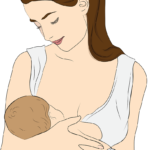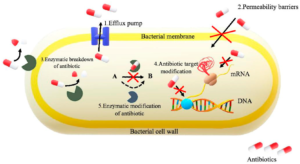What is Cefixime? Cefixime uses!
Cefixime is a third generation cephalosporin antibiotic it includes stopping growth of bacteria in the body. Cefixime is used to treat a large variety of infections including urinary tract, ear, and lung infections caused by bacteria. Cefixime kills the bacteria and stops their further growth.
Cefixime uses also to treat susceptible Gram negative and Gram positive bacterial infections. Cefixime is important to take the drug for the full time period as prescribed. If you discontinue the therapy, it may result in ineffective treatment.
Cefixime indications:
- Ear infection,
- Uncomplicated Urinary Tract Infections,
- Otitis Media,
- Skin infections,
- Pharyngitis and Tonsillitis,
- Acute Exacerbations of Chronic Bronchitis,
- Uncomplicated Gonorrhea (cervical/urethral),
- Lower respiratory tract infection,
- Upper respiratory tract infection.
Cefixime Dosage:
Adults:
The recommended dose of cefixime is 400 mg daily. This may be given as a 400 mg tablet or capsule daily or the 400 mg tablet may be split and given as one half tablet every 12 hours. For the treatment of uncomplicated cervical/urethral gonococcal infections, a single oral dose of 400 mg is recommended. In the treatment of infections due to Streptococcus pyogenes, a therapeutic dosage of cefixime should be administered for at least 10 days.
Pediatric Patients (6 months or older)
The recommended dose is 8 mg/kg/day of the suspension. This may be administered as a single daily dose or may be given in two divided doses, as 4 mg/kg every 12 hours.
Cefixime Side effects:
Common side effects of Cefixime include:
- Headache,
- Diarrhea,
- Nausea,
- Constipation,
- Loss of appetite,
- Indigestion, gas,
- Heartburn,
- Dizziness,
- Anxiety,
- Drowsiness,
- Increased night-time urination,
- Runny nose,
- Sore throat,
- Cough,
- Stomach upset/pain.
Serious side effects of Cefixime:
These are rare but very serious side effects of Cefixime:
Stomach or abdominal pain,
Persistent nausea or vomiting,
Yellowing eyes or skin,
Urine (Color change),
Unusual tiredness,
Easy bruising or bleeding,
Mood changes (such as confusion).
Cefixime uses and Pregnancy:
None enough studies about if cefixime is safe for use during pregnancy. This medication should not be used during pregnancy unless the benefits outweigh the risks. If you become pregnant while taking this medication, contact your doctor immediately.
Cefixime uses and Breast-feeding:

None enough studies about if cefixime passes into breast milk. If you are breast-feeding and are taking this medication, it may affect your baby. Talk to your doctor about whether you should continue breast-feeding.
Cefixime interactions with other medicines:
Tell your doctor about all the medicines you take including prescription and non-prescription medicines.
- Carbamazepine,
- probenecid,
- methotrexate,
- birth control pills,
This is not a complete list of cefixime drug interactions. Ask your doctor or pharmacist for more information.
Warnings and Precautions:
Cefixime used with caution in patients allergic to penicillin type antibiotic. An allergy my exist to this as well. This drug should be used only if clearly needed during pregnancy or lactation. Cefixime should not be given in patients suffering from kidney dysfunction.
Mechanism of action:

It binds like all beta-lactam antibiotics, cefixime binds to specific penicillin-binding proteins (PBPs) located inside the bacterial cell wall, causing the inhibition of the third and last stage of bacterial cell wall synthesis. Cell lysis is then mediated by bacterial cell wall autolytic enzymes such as autolysins; it is possible that cefixime interferes with an autolysin inhibitor.
Summary:
Cefixime, is 3rd generation cephalosporin antibiotic medication used to treat a number of bacterial infections. These infections include otitis media, strep throat, pneumonia, urinary tract infections, gonorrhea, and Lyme disease. For gonorrhea typically only one dose is required. It is taken by mouth.
Common side effects include diarrhea, abdominal pain, and nausea. Serious side effects may include allergic reactions and Clostridium difficile diarrhea. It is not recommended in people with a history of a severe penicillin allergy.
Cefixime was patented in 1979 and approved for medical use. It is on the World Health Organization’s List of Essential Medicines.
Storage requirements:
- Store Cefixime between 2-25ºC (36-77ºF)
- Protect from light
- Keep this and all medicines out of the reach of children.

